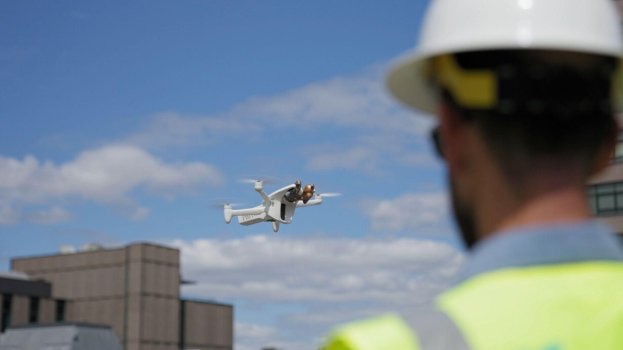When we founded Skyward, our commercial drone company, back in 2012, we faced a fundamental problem: At the time, it was illegal to actually fly drones for commercial purposes anywhere in the US.
While staking your entire business proposition on something that’s banned by law is not normally a best practice, we did it anyway, for a very simple reason. We believed that commercial use of drones would soon become legal, and that it would transform the way entire sectors do business.
Early on, we predicted that this transformation would come about as we connected drones to increasingly powerful wireless communications networks. With such connectivity, drones would be able to do far more than just fly up high and send back a camera feed to the user on the ground below. They could be controlled from anywhere, collect rich data, transmit the results anywhere in the world — and intelligently integrate with all the other drones, helicopters, and planes in the sky.
The legalization part got cleared up soon enough; in 2016, the Federal Aviation Administration (FAA) approved drones for commercial use. Since then, drones have indeed become vital assets in several industries, including energy, construction, surveying, and telecommunications.
But one piece has remained missing — cellular connectivity. Among all those drones that have been buzzing above building sites and inspecting infrastructure in recent years, virtually none of them have been connected to a wireless network. That’s all about to change.
Continue reading: https://www.verizon.com/about/news/era-cellular-connected-drone-has-arrived
While staking your entire business proposition on something that’s banned by law is not normally a best practice, we did it anyway, for a very simple reason. We believed that commercial use of drones would soon become legal, and that it would transform the way entire sectors do business.
Early on, we predicted that this transformation would come about as we connected drones to increasingly powerful wireless communications networks. With such connectivity, drones would be able to do far more than just fly up high and send back a camera feed to the user on the ground below. They could be controlled from anywhere, collect rich data, transmit the results anywhere in the world — and intelligently integrate with all the other drones, helicopters, and planes in the sky.
The legalization part got cleared up soon enough; in 2016, the Federal Aviation Administration (FAA) approved drones for commercial use. Since then, drones have indeed become vital assets in several industries, including energy, construction, surveying, and telecommunications.
But one piece has remained missing — cellular connectivity. Among all those drones that have been buzzing above building sites and inspecting infrastructure in recent years, virtually none of them have been connected to a wireless network. That’s all about to change.
Continue reading: https://www.verizon.com/about/news/era-cellular-connected-drone-has-arrived

